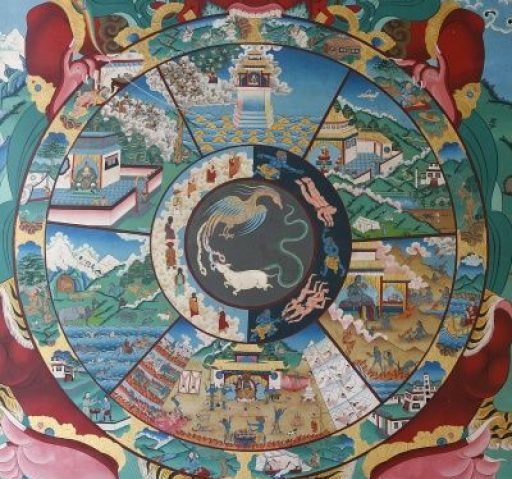Jan 28, 2023
This Bollywood film using the name Bruce Lee has nothing to do with legend Bruce, but the dancing and music are good. There was even a sequel. Name your movie Bruce Lee, and it will probably make money. The main character just happens to be name Bruce Lee. The martial arts are terrible.
Wing Chun: Lee’s Original Chinese Gung Fu

Not many gung fu films have portrayed Wing Chun accurately. Wing Chun was the art Bruce Lee first learned at the age of 13 in Hong Kong. Even Bruce Lee never performed authentic Wing Chun in his films. Warriors Two (1978) directed by Sammo Hung is one of the exceptions and shows authentic Wing Chun. Indeed, the stars actually studied Wing Chun to prepare.
Why is understanding Wing Chun important for understanding Bruce Lee?
It represents Bruce Lee’s early thoughts of mastering a system. He would later transcend the art. Before you can evolve beyond a system, you must be competent in it. For creative writers to break the rules, they need to know them. It also parallels what happened to Bruce in Hollywood. Hollywood didn’t know what to do with Bruce Lee. Since there had never been an male Asian star who was a dominate action star, Bruce was going against an established system. Bruce Lee by going to Hong Hong would transcend Hollywood.
Bruce Lee learned this style as a child from Ip Man.
This style was originally created by a woman, so it purports to be effective for being powerful when practiced by common people. Michelle Yeoh stars in the film Wing Chun (1994) which also starred Jet Li. The style is known for its fast hand techniques while employing trapping techniques and low kicks.
Interestingly, the film Wing Chun is not authentic. Typical for its lack of authenticity, the film Wing Chun, though entertaining, does not possess good Wing Chun hand techniques. There are many head kicks which are not Wing Chun in nature.
Ip Man
Ip Man (2008) and its sequel Ip Man 2 (2010) helped to make Donnie Yen (1963- ) the current number one leading Chinese action star. Of course, he helped to revise the popularity in the art. Yen has been around a long time. It is nice for him to finally earn the respect that he deserves.

There is a classic scene in Ip Man, where he has a fight with ten Japanese black belts. In some ways, the fight makes one think of Bruce Lee’s similar fight with multiple Japanese black belts dressed in karate gi in Fist of Fury (1972).
Bruce Lee really introduced the use of kicking as an effective way to fight multiple opponents in cinematic action. Furthermore, it was more visually stimulating to use the feet. Indeed, that was something new for its time. However, Wing Chun prefers the use of hands and in the Ip Man fight, Donnie Yen, skillfully uses his hands in a way that had never been seen, as a fist of flurries. That one fight in a sense changed kung fu fights and showed that the hands can be as visually interesting as kicks. Bruce would have liked it because in real fights, he also preferred to use hands more than feet because of his own Wing Chun background. This hands were faster than his feet.
Buddhist Nun
A Buddhist nun Ng Mui created the style about 300 years ago. Her first student was Yim Wing Chun.
Bruce Lee first learned Wing Chun and then later developed Jeet Kune Do. It was the realistic techniques and philosophy of Wing Chun that helped to create the philosophy behind Jeet Kune Do.
Wing Chun is practiced around the world. Emin Boztepe is a well known American of Turkish descent, who is quite skilled.

Kung Fu Salute: The Sign of the Rebel
Ming Dynasty (1368-1644) was the best of times and represents a golden age of Chinese history.
Many Kung Fu films were set in this important period, the Ming Dynasty. Indeed, the golden years of the Shaolin Temple occur when Buddhist monks fight against the Mongolians. During the previous period, Kublai Khan (1215-1294) had just managed to establish a hold on China.
- A Chinese commoner, who had previously been a Buddhist monk, became the first ruler of this dynasty.

- The Chang San-feng, the creator of Tai Chi, creates his legend though he was born in the Sung Dynasty.
- The Five Animal styles were developed.
- Rebuilding of the Great Wall occurs.
- Like Buddha, several Chinese princes left their kingdoms to become monks in the Shaolin temples.
- The Southern Shaolin temple was built during this time.
- Then the Manchurians came and destroyed the temples. It would be burned down as part of a Ming resistance during the Qing Dynasty.
- Twenty four Emperors ruled China.
- The Forbidden City was built (1406-1420).
Qing Dynasty (1644-1911): The Worst of Times
During the Qing Dynasty, rebels would meet each other with this salute representing the glory of another the previous Ming dynasty. The Qing Dynasty represents the fall of Chinese domination and the last Emperor of China, who is actually not Chinese, is Manchu. Fist of Fury is set in Shanghai at the end of the Qing Dynasty.
The left hand covering the right fist is a greeting from the Ming Dynasty. The fist represents the sun/light (yang) while the left palm represents the moon/reflection (yin), which together represent Ming. When this greeting is used my kung fu practitioners, it is a revolutionary sign, symbolizing a return to Chinese glory!
Ming, Brightness
| Yang | Yin |
| Closed Fist Right | Open Fist Left |
| Masculine | Feminine |
| Aggressive | Passive |
| Sun | Moon |
| Light | Reflection |


